I’m a baby boomer, and back in the day it was expected that girls would know how to cook.
When I went to intermediate (which I think is like junior high), once a week we went up to the college (high school) for “manual training”. The girls learnt cooking and sewing and boys learnt woodwork and metalwork.
I was the oldest of four, and at the weekend, I often cooked breakfast for my younger siblings. Saturday afternoons were usually spent in the kitchen with my mother, baking some goodies for school lunches for the next week. During the week, I’d need to do some dinner prep before mum got home from work.
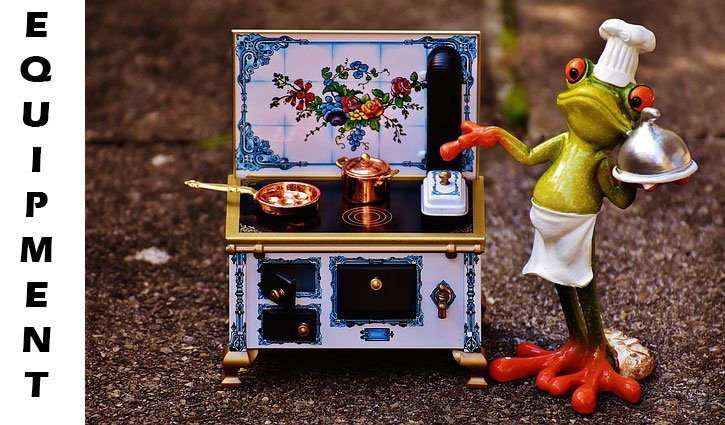
Back then our only high tech equipment was a Kenwood mixer for baking, with a mincer attachment for when we wanted to make rissoles. The leftovers from the lamb roast would go through the mincer, then be mixed with mashed potato, and fried up in little patties.
Nearly 50 years later, there is so much high tech equipment that our kitchen benches are filled with the stuff. Even the equipment that isn’t electric is higher tech. Think of silicon molds for baking or making chocolates.
But how much of it is really useful?
Here are my favourites – the things I actually use – and the things I don’t use any more.
Let’s start with low tech equipment
I’m going to assume you already have the basics. If you have questions on any of these, just ask in the comments:
• Good quality knives in various sizes
• Vegetable peeler, spatula, turner, slotted spoon
• Chopping boards
• Saucepans in different sizes
• Oven trays
• Casserole dishes
One thing you will have that is worth discussing separately is your frying pan. If you currently have a non-stick pan, be aware that these are toxic. Yes, I know they’re easiest to use, but just don’t. We have:
• Two x cast iron frypans (small and medium/large) which we mainly use for steak. Keep them well seasoned, and never wash them with soap or a scrubber.
• Two x stainless steel frypans (medium and large). These are used for anything that is likely to stick (eg eggs) or is acidic (anything with tomato). The large one is also good for any kind of mince (ground meat) and vege dish, though you could also use a large saucepan for that. We use them for pan frying fish, caramelising onions, frying or scrambling eggs. Don’t be afraid of using plenty of fat to prevent sticking. As long as it’s a safe fat like butter, ghee, coconut oil, pork lard or beef tallow, you’ll be fine.
You might also have non-stick bakeware. I’m not really happy with any of the alternatives. Although people are now using silicon a lot, I wonder whether it’s healthy when it gets hot. So I have to admit that I still use my old non-stick bakeware, but make sure I line it with baking paper, or use paper cups (known as pattie pans in NZ).
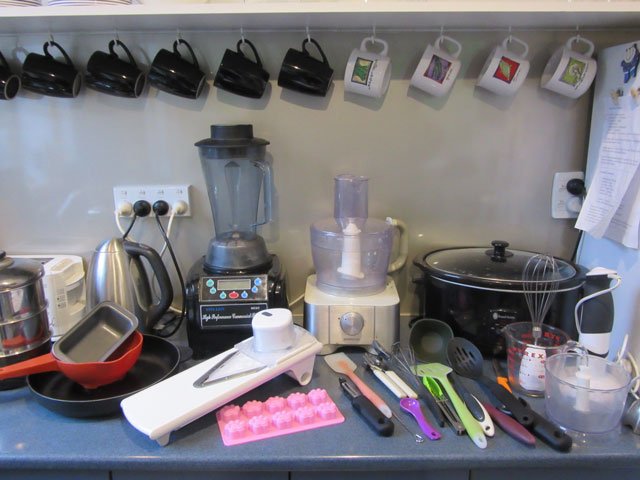
Things I use regularly that you might not have:
• Saucepan with steamer – I prefer steaming my veges to boiling them
• Stock pot – a very large pot is very useful for making bone broths, soups and stews
• Mandolin, Julienne peeler or spiraliser – If I was starting my kitchen from scratch, I’d probably go for a spiraliser. What I actually have is a large mandolin, and a small julienne peeler. The mandolin is great for making noodles from zucchini or daikon radish, or slicing thinly. But I find it doesn’t work well on very hard things like carrot or kumera, so use the julienne peeler for those.
• Jars for fermenting – in a traditional kitchen, you might want to do some fermenting. This might include sauerkraut or other fermented veges, kefir, kombucha or other fermented drinks like beet kvass. These are great for improving your gut flora, as well as a way to store produce.
• Strainer / colander – useful for straining out kefir grains, or draining cooked noodles or other veges.
• Metal sieve – no good for straining anything acidic, but useful for sifting flour or other dry ingredients for baking
• Silicon moulds – although I don’t trust silicon for baking, I do use it sometimes for making homemade chocolate, fudge or gelatin goodies into interesting shapes.
• Meat mincer – not powered, just one you stick on a bench and turn the handle, which works fine
High tech (powered) equipment
Again I’m going to assume you have some basics, such as:
• Electric jug / kettle for boiling water for hot drinks OR a coffee maker, if you love your coffee
• Toaster – if you are still eating grains. Even if you’re Paleo, it’s nice to be able to toast up some Paleo bread.
My other favourites are:
High speed blender
The Vita Mix is the best known brand, as it was the first. But there are other good brands available now. Ours is VitaEasy.
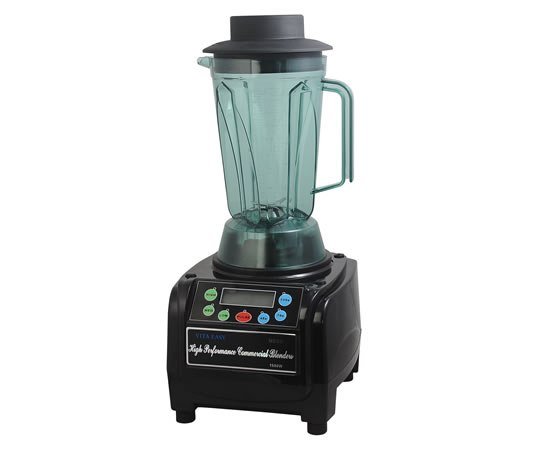
We use this every single day for things like:
• Smoothies
• Making nut milk
• Grinding up seeds
You could also use it for:
• Blending soups (I use my stick blender)
• Making nut butters
• Grinding coffee beans
• Frothing milk for coffee
The manual also says it will mince meat, but trust me, you don’t want to go down that road! After trying it, I went straight out and bought a hand mincer for that.
If you already have a lower speed blender, it will still do a lot of things, like smoothies, nut milk or soups. It just won’t be as smooth or finely ground.
NutriBullet or Magic Bullet
We don’t have either of these, as we already have a blender. But if you wanted simplicity and didn’t have much space, one of these would be a good choice of blender. From what I’ve read, choose a Magic Bullet if you just want to make smoothies from soft ingredients. But the NutriBullet is more powerful if you want to use hard or frozen ingredients.
Full size food processor
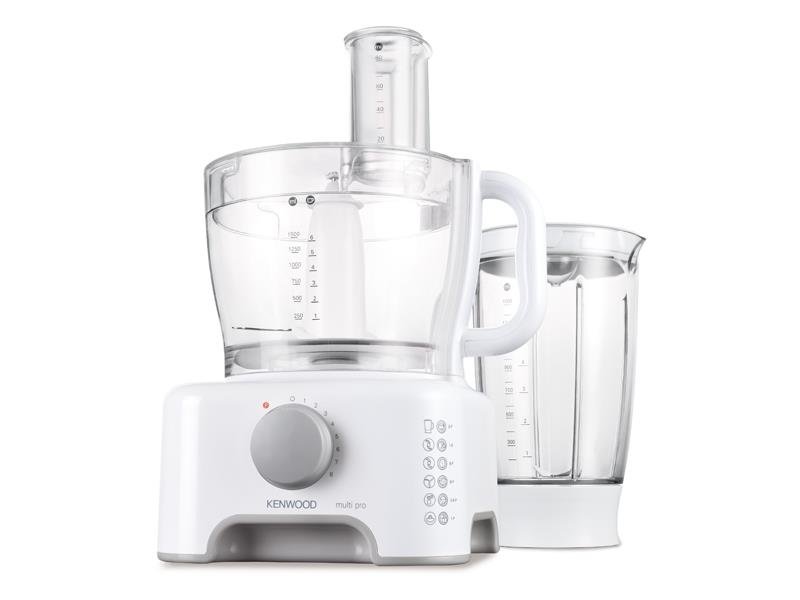
If your blender is a high speed one, you might not need a food processor as well.
I use mine for:
• Baking (where I would have used a cake mixer)
• Low starch breads eg my cashew bread
• Mixing together ingredients for snack bars eg my whole food chocolate and fudge
• Mixing together nuts and veges for a nut loaf
If you don’t have a blender, you could use your food processor for soups.
They usually also have attachments that allow you to slice or grate cheese or veges.
3-in-1 – stick blender & mini food processor

The stick blender is my favourite tool for:
• blending up soups or sauces – just stick it right in the pan
• making mayo (use it with the container that comes in the set)
The whisk I use where I would once have used the cake mixer with the whisk blade:
• beating eggs for omelettes or frittata
• whipping cream
• beating egg whites for meringues or pavlova
The mini processor is great for when you have small amounts to process:
• pancake mix for one
• chopping onions
• mixing up a jar of nut butter with come raw cacao and a dash of honey to make my own chocolate nut butter
Crockpot
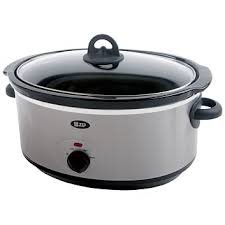
How fabulous is it to come home from work and smell your dinner all ready for you in the crockpot / slow cooker?
I use it for:
• stews
• mince (ground meat) and veges
• roasting chicken or chicken pieces (with a layer of onions underneath)
• making bone broth
They are also used for:
• Cooking breakfast porridge overnight
• Making ghee
• Anything you want to slow cook really
Dehydrator

You don’t really NEED a dehydrator. You can use a VERY cool oven instead. But a dehydrator is easier than tying up your oven for days, and you feel safer leaving it on when you go out. I use it for:
• Making jerky – including my meat and vege jerky
• Drying excess summer produce to store it for winter
• Making fruit rollups
• You can even dehydrate broth!
Juicer
We have had a few juicers over the years, including an expensive cold-press kind. If you want to do some juicing, it is worth getting cold-press to preserve the nutrients.
But we always find we end up not using it. For me, as a Protein type, I need to add some fat such as coconut cream, cream or avocado to my juices to avoid a blood sugar spike. Yes, even with pure vege juices. So we tend to just just throw everything in the blender, and ending up selling our expensive juicer on Trade Me.
Ice cream maker
I don’t often use this, but in summer it’s nice to have some homemade ice cream with ingredients you trust. Usually I just throw some frozen fruit pieces, a dash of honey and some cream or coconut cream in my mini processor, to make semi soft ice cream. But occasionally I will go through the more complicated process of making “real” ice cream.
But what about my XYZ?
Ah, you noticed a few missing things, did you?
• Microwave – I tend to be an early adopter, so we had one long before every else. We also stopped using it long before everybody else as we became aware of the adverse effects they have on food. The only thing we’d ever use it for now is to heat up a wheat pack to warm our frozen winter toes.
• Deep fryer – Personally, I never use a deep fryer. If you do use one, make sure you use stable fats like animal fats or coconut oil. Never use canola, soy or other so-called vegetable oils. (Have you ever noticed that no vegetable oils actually come from vegetables?)
• Breadmaker – I used to have a breadmaker as well. If you are able to eat grains, you might want to check out my breadmaker recipe for pre-soaked spelt bread. Or you may prefer the old fashioned methods of sourdough breads. And if you’re grain free, the breads you’ll make don’t need to rise.
IMAGES: The first is based on a Pixabay image; the second is by @sift666 of our own kitchen, and the others are all from the manufacturer or a retailer’s website.
Thanks for reading
Follow me for more health, nutrition, food, lifestyle and recipe posts.

I am now on Peerhub offering one on one nutritional coaching and EFT (Emotional Freedom Technique) sessions by Skype.
Some of my previous posts:
THOUGHTS ABOUT LIFE: My Intro ~ Are there kiwis in the house? ~ Benefits of joining a community choir ~ My grandmother’s legacy ~ Steemit in downtown Wellington ~ Overcoming my fears ~ Observations from a bus ~ The brandy snap maker ~ Wearable Arts Award Show ~ 2 months on Steemit and now curating health, nutrition and recipes ~ Positivity Challenge 3 – Acts of kindness
RECIPES AND KITCHEN TIPS: Choc Blackcurrant Smoothie ~ Paleo Cottage Pie ~ Feijoa Pear Smoothie ~ Grain free, dairy free Pumpkin & Cashew Bread ~ Tip for storing ginger & tumeric ~ Grain Free Banana Cashew muffins ~ Warming winter soup ~ Healthy Chocolate & Fudge ~ Jerky with vegetables ~ BREAKFAST ideas ~ Choco-mallow protein bars ~ For MORE RECIPES and my 15 step Whole Food cooking course, see my recipe website.
HEALTH AND NUTRITION: The wide variety of healthy diets out and what they have in common ~ The travels of Weston A Price and his discoveries about healthy diets ~ Good fats vs bad fats ~ DNA testing for better Health & Fitness ~ DNA testing part 2: How Well Do I Digest Carbs? ~ DNA testing Part 3: I can’t eat Carbs & How to Manage that ~ About the Gut & Psychology syndrome (GAPS) diet Part 1 ~ GAPS diet Part 2: Foods we can’t have ~ GAPS diet Part 3: Foods we CAN have ~ GAPS diet Part 4: What if I can’t eat some animal foods ~ Salicylate intolerances ~ Thoughts about Breast Health ~ I’ve got a cold & how to handle it ~ Sleep like a kitten Part 1 – 3 tips ~ Sleep Well Part 2 – What’s your sleeping style? ~ Sleep Well Part 3 – Resetting your body clock

